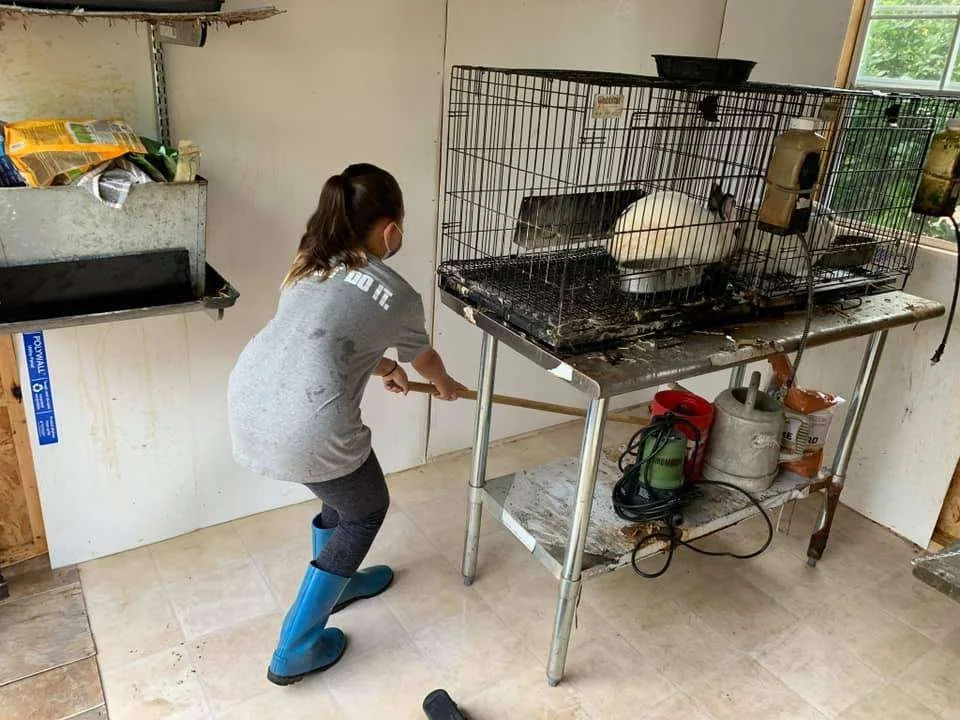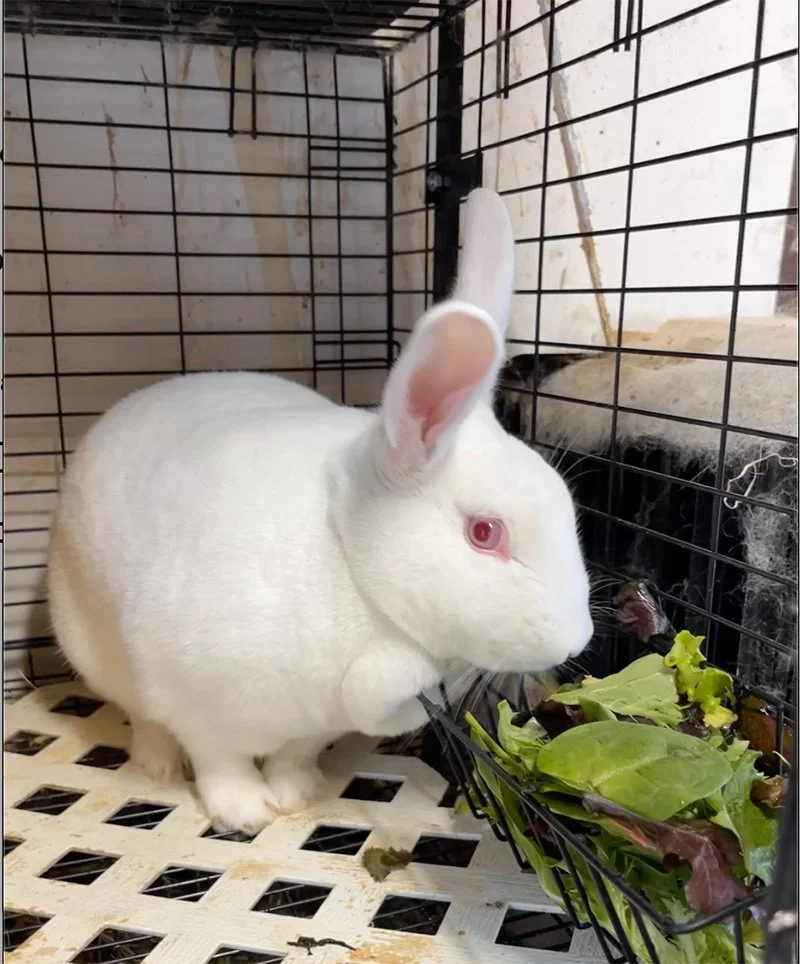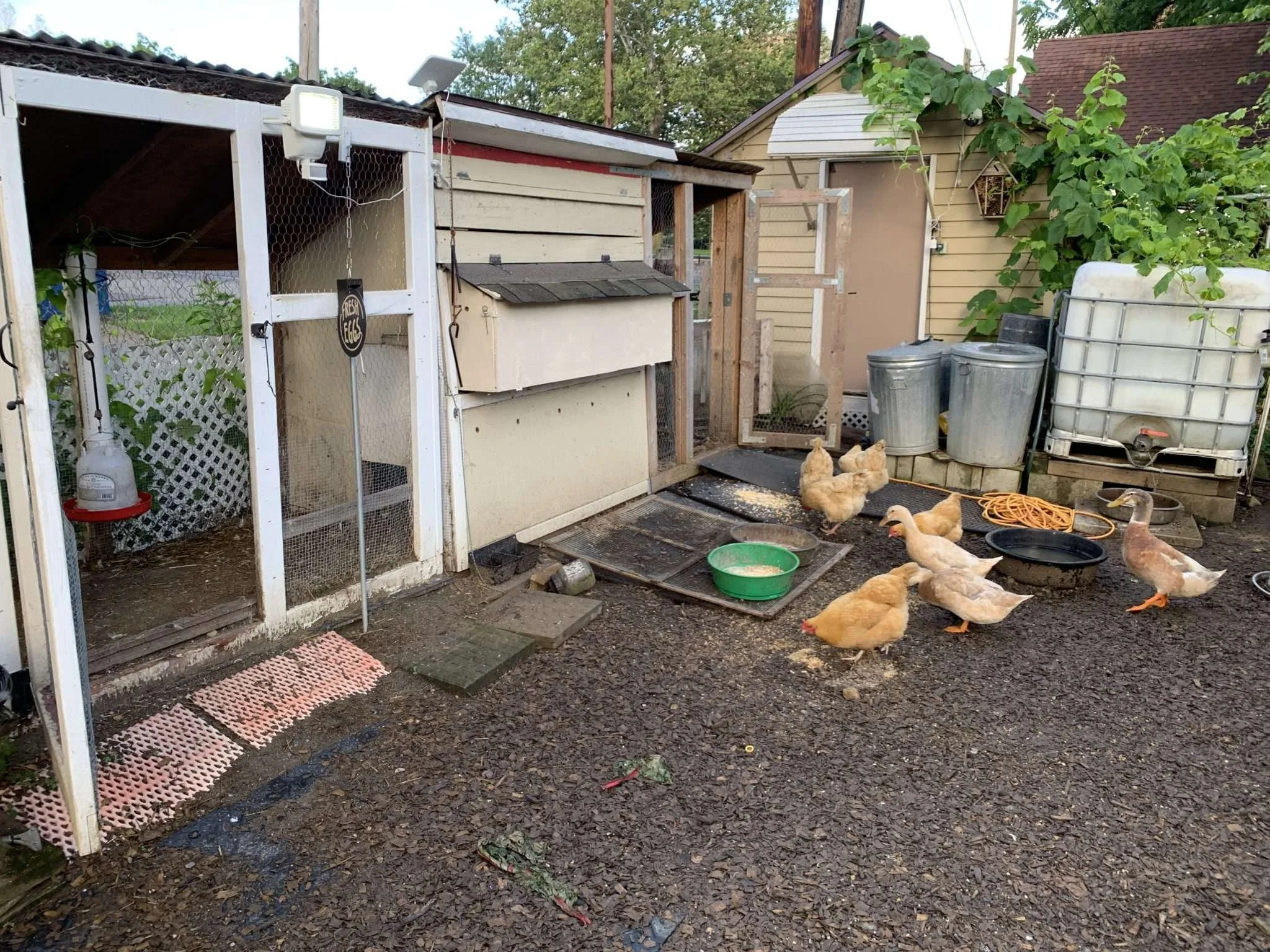Tour of The Livestock Sheds
Tour of The Livestock Sheds
A Happy Rabbit
An UNHAPPY Rabbit
Mama Rabbit with her kits
The modern iteration of the chicken coops and run.
Welcome to the Tour of The Livestock Sheds at Mezzacello. This is not just a coop, or a enclosed run: This is an ecosystem with specific inputs and outputs that are vital to the health of Mezzacello. It houses animals and supplies, keeps them safe, and harvests wastes for storage and reuse in all the ecosystems at Mezzacello.
This facility is the latest iteration of livestock housing and sanitary systems from the original chicken tractor I first employed. In addition to being able to completely wash, walk through and store feed, medicine and supplies, this facility has a sewer system that collects all wastes and centralizes them for later integration into the soils of Mezzacello.
A chicken tractor (sometimes called an ark) is a movable chicken coop lacking a floor. Chicken tractors may also house other kinds of poultry. Most chicken tractors are a lightly built A-frame which one person can drag about the yard. It may have wheels on one or both ends to make this easier.
Wikipedia
The original chicken tractor.
The second iteration of the Ducks and Chicken coops.
More Than Eggs, Feathers, Fur, Insects, and Meat
Here at Mezzacello we raise chickens, ducks, rabbits, fish, crickets, mealworms, and earthworms. All of these with the exception of earthworms are a source of food, manure, and by products. Their manures are an endlessly useful supply of amazing and organic fertilizer.
Remember that five of the UN 17 Sustainable Development Goals deal with water, life underwater, life on land, and access to fresh food. This is a very important aspect of Mezzacello. We take our responsibility to and care for our animal family very seriously here, and you should as well.
So what is the value of this pond?
The livestock shed is 10' x 12' by 8' in size
It houses all poultry species and the rabbits and seasonally the crickets and mealworms
In addition to the livestock shed there is a 10' x 14' enclosed run with dual gates for access
The animals can also free range behind the livestock and power generation shed (see map)
This space behind the sheds allows poultry to access dirt and grit and take dust baths
This livestock shed will safely and legally house 8 chickens and four ducks at a time
Meat birds are raised in the livestock shed as well, but are pulled out and housed in a temporary coop for processing
The floor of the poultry run is covered in rubber horse mattes for easy clean up and power washing
Beneath these mattes is an elaborate sanitary sewer drain that recaptures all wastes and stores them for later retrieval
This waste storage system is lined with plastic and allows the acidic wastes to decay down in sunlight
There is an industrial grate over the sewer collection leach pit located in the walkway that runs to the north of sheds 1 and 2
The rabbits reside in the east side of the divided livestock shed
Their wastes are also recycled and stored in a specialized manure collection bin for integration into garden beds, compost or just collected, packaged and sold
Rabbit manure is incredibly fertile and will not harm tender roots like fowl manure
The livestock shed can house a maximum of 8 rabbits, but we keep it to four at a time
There is a 1000L (350 G) Rain Cachement cube located in the run for watering the animals
This rain barrel is filled with water form the roofs of sheds 1 and 2
This rain barrel is equipped with solar and battery powered heaters to always insure liquid water even through winter
Insect species are housed in the Livestock shed and processed in the biolab, Shed 4
Crickets and mealworms are vital food source for poultry, and properly processed, humans
The insect population is a hybrid compost system as they eat waste products from the farm and turn it into more insects
There are dual security doors and gates at all entrances into the livestock shed
In spring, summer and fall, the doors are secured by steel kennel doors to aid in air circulation
In winter, there are heavy doors and an automatic temperature regulation system keeps the livestock shed at a comfortable 8C (46F)
Sensors determine the presence of VOCs in the shed and activate fans to push out ammonia and draw in fresh air
The door to the poultry coop is automated and opens at dawn and closes at dusk
The facility is run entirely from renewable energy in the form of solar and wind power
The livestock coop has its own weather station, wind turbines, solar panels and dedicated backup battery system
There is the capability of keeping a rooster, but we only need him for procreation in the spring








